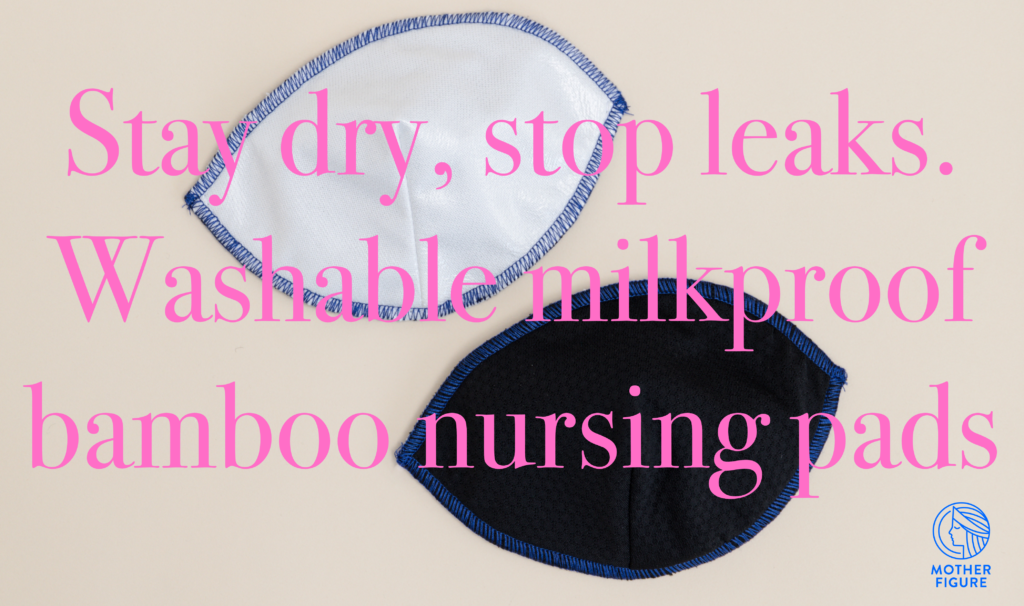Breastfeeding is a beautiful way to bond with your child, but you won’t always feel like some magical, motherly goddess while you’re nursing. Breastfeeding can be challenging, painful, and messy. That’s why it’s essential to only use the best nursing pads while you’re breastfeeding.
Nursing pads have two main functions: They soothe irritated nipples and protect your clothing from embarrassing leaks. But just like your breastfeeding experience, every nursing pad is unique. So how do you choose the best nursing pads? Here are six tips to help you find a nursing pad that’s perfect for you:
Tip #1: Consider your habits
First, consider your breastfeeding and lifestyle habits. How old is your child, and how often does he/she nurse? Do you frequently nurse outside of your home, or find yourself leaking in places where you don’t have easy access to a washing machine?
Nursing pads are made from a variety of different leak-proof materials, each with their own benefits. We recommend choosing a pad that will fit your specific nursing needs. For example, if you know you’ll be out of the house, you may want to opt for disposable nursing pads that you can toss in the trash once full. The downside of many disposables is that they can be irritating against the skin, so you may need to do some searching if that’s the case for you.
Alternately, a reusable pad might be a better choice, especially for eco-conscious moms or those who are nursing close to home. Thinner pads tend to be a better choice for working out. Many reusables have good absorbent properties but some have less leak protection layers than others, so look out for the ones that are right for you. Fortunately, we designed our pads to address this, so women don’t have to be homebound to use reusables.
Tip #2: Look for different absorbency nursing pads
When you’re breastfeeding, sooner or later you’re going to leak. It happens to every mother. Eventually, you’ll learn to predict when you’re about to lactate, but it’s still more of an art than a science. That’s why the best nursing pads come in different absorbency levels.
There’s nothing worse than a pad that’s too thin and leads to stains. Of course, no one wants to walk around with thick, bulky pads poking out of their shirt. Luckily, many nursing pads, like Motherfigure’s, are designed to keep a low profile while still protecting you from leaks.
Tip #3: Choose nursing pads with the right size, shape, and contour

That brings us to size, shape, and contour. The best nursing pads will fit comfortably under any bra or garment. Choose pads that are the right size and shape for you. Nursing pads that have a contoured shape will conform to your body’s natural curves—or those of your bra. You want something that will stay in place so it actually absorbs the leak but also doesn’t irritate your skin.
Aesthetics aside, sizing is also important for your own comfort. Pads that are too big or too small may cause chafing or irritate your skin. When you’re nursing, your breasts are already very tender, so make sure you choose pads that won’t add to your discomfort. Here’s a general sizing guide that can help.
Tip #4: Buy breathable material
Next, look for nursing pads made from breathable material, especially for the layer closest to your skin. This will help you stay cool and soothe sore nipples. We recommend nursing pads made from soft, natural materials like cotton or bamboo or performance fabrics like mesh.
Pads that breathe also dry more quickly, helping you stay clean and comfortable. Motherfigure’s nursing pads combine the best qualities of cotton and bamboo fiber into a fast-wicking pad designed for performance and absorbency.
Tip #5: Consider reusable versus disposable nursing pads
When you’re choosing the best nursing pad, you’ll want to consider whether it’s reusable or disposable. Both types of pad have their own advantages. With disposable pads, you simply throw them away once they’re full, which can offer greater convenience. After all, when you’re a nursing mom, you’ve got enough on your plate without more laundry.
But disposable pads are made with superabsorbent polymers that trap moisture and chafe your sensitive skin, similar to a sanitary napkin. Because you’re constantly repositioning your bra, you may find that these break, causing the sandy polymers to get onto your skin. Though these materials are nontoxic, they’re not meant to be ingested, and some women worry about transferring to their baby as they nurse.
Reusable nursing pads like Motherfigure’s are softer, more absorbent, and made from natural materials that can withstand up to 300 washings. When a washable nursing pad is full, toss it in the washing machine with your normal laundry, and you’ll be good to go as soon as it’s clean. This eco-friendly option can also end up saving you money in the long run.
Tip #6: Think about quality, not quantity
Finally, remember that nursing pads are like anything else in life. You get what you pay for. We all know having a baby is expensive, so it’s tempting to cut corners and pinch pennies. And sometimes being thrifty pays off.
But with nursing pads, we highly recommend choosing quality over quantity and paying more for better quality. Not only do cheap nursing pads fit poorly, but they’re much more likely to leak or chafe. They can also cause discomfort and irritation. If you’re using washable nursing pads, low-quality pads can become threadbare and fall apart faster.
When looking for the best nursing pads (or virtually any other product), opt for a higher-quality brand made from better materials. Your breasts will thank you!
